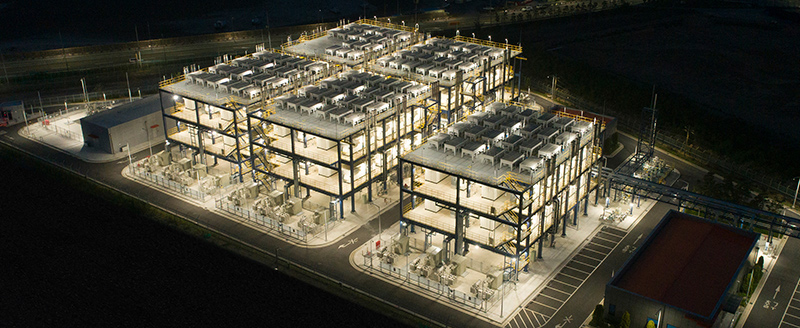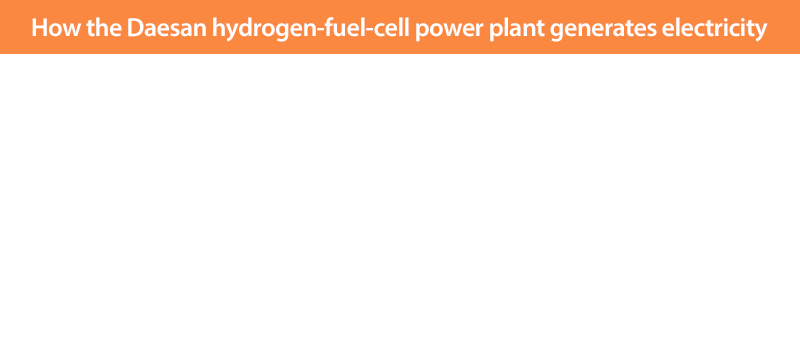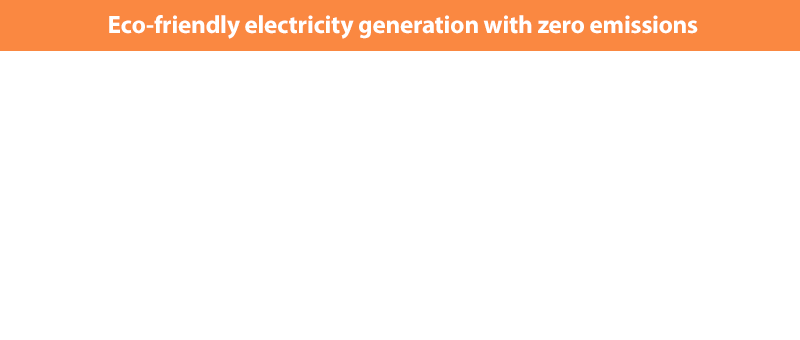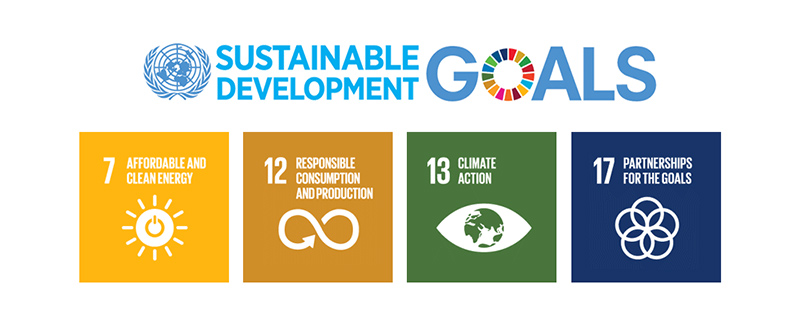Hanwha's Groundbreaking Power Plant Shows How Hydrogen Can Fuel a 'Circular Economy'
What’s colorless, odorless, and so abundant that it can be extracted from water?
It’s hydrogen — the most common element on Earth. It is now in increasing demand as a highly efficient and sustainable source of electricity, especially when used in hydrogen fuel cells.
Hydrogen-fuel-cell energy differs greatly from fossil-fuel-electricity generation, which relies on combustion to produce steam and spin a turbine. Instead, hydrogen fuel cells combine hydrogen and oxygen in an electrochemical reaction to generate electricity. The only byproducts are heat and water vapor, making hydrogen fuel cells an appealing way to cut carbon emissions.
In 2018, the market for hydrogen-fuel-cell power reached USD 865.1 million. The market is expected to rise sharply and reach USD 49.12 billion by 2026.
With so much potential for growth in the hydrogen power market, Hanwha Energy – a comprehensive-energy-solutions company – is now diversifying its product portfolio by constructing and operating hydrogen-fuel-cell power plants.

Hanwha Energy’s hydrogen-fuel-cell power plant at the Daesan Industrial Complex in Korea is the world’s largest in both size and energy production capacity
Sustainable solutions through synergy
Hanwha Energy’s hydrogen-fuel-cell power plant at the Daesan Industrial Complex in Seosan, Korea, came online in July of 2020. The plant contains 114 fuel cells and can generate up to 400,000 MWh of electricity per year¹, making it the world’s largest industrial hydrogen-fuel-cell power plant. It is also the first to only use hydrogen recycled from chemical manufacturing, with the fuel being provided by the neighboring Hanwha Total Petrochemical production facility.
The idea for this hydrogen-fuel-cell power plant project originated in 2015, when Hanwha Total Petrochemical faced a dilemma. It had expanded its aromatic hydrocarbon² production capacity at the Daesan Industrial Complex, resulting in excessive amounts of hydrogen byproduct. Normally, this hydrogen would be burned off, but the company had instituted a “No Combustion, No Air Pollution” policy to reduce its carbon emissions.
Hanwha Energy proposed recycling the hydrogen to produce electricity for Hanwha Total Petrochemical. Construction on the Daesan hydrogen-fuel-cell power plant began in July of 2018.

The Daesan hydrogen-fuel-cell power plant produces electricity using waste hydrogen from Hanwha Total Petrochemical
The synergy between Hanwha Energy’s hydrogen-fuel-cell power plant and Hanwha Total Petrochemical is a prime example of the circular economy in action, wherein the consumption of precious resources is reduced through the reuse and recycling.
The Hanwha Total Petrochemical plant produces up to three tons of hydrogen per hour, which is pumped to the nearby Daesan hydrogen-fuel-cell power plant. This hydrogen is fed into fuel cells to generate electricity. That electricity is transmitted back to Hanwha Total Petrochemical to be used as power.
The Daesan power plant’s fuel cells also generate up to 120,000 metric tons of water vapor per year as a byproduct. This vapor is condensed and pumped back to Hanwha Total Petrochemical.
Reducing pollution with a cleaner solution
The Daesan hydrogen-fuel-cell power plant is a near-zero-waste operation. Highly efficient microfilters are installed on the fuel cells to make the plant even greener. These microfilters can catch particles smaller than 1 micrometer (0.01% of a centimeter) in width and clean the same amount of air that 350,000 people breathe annually. They prevent pollutants like nitrogen oxide, sulfur oxide, and atmospheric dust from contaminating the electrochemical reaction that occur in fuel cells to generate electricity.

Hydrogen fuel cells combine hydrogen and oxygen atoms in an electrochemical reaction to generate electricity, heat, and water
Within a fuel cell, hydrogen molecules are split into electrons and hydrogen ions to generate direct-current electricity. These electrons and hydrogen ions are then bound to oxygen to form water vapor that is expelled as exhaust. By removing impurities from oxygen before it enters the Daesan power plant’s fuel cells, the microfilters ensure optimal electricity generation while prolonging the cells’ lifespans.
A potential new paradigm for global green energy

The Daesan hydrogen-fuel-cell power plant helps Hanwha address United Nations Sustainable Development Goals (SDGs)
By using recycled fuel to generate clean energy and recycling its own byproducts, the Daesan hydrogen-fuel-cell power plant helps Hanwha address several United Nations Sustainable Development Goals³ (SDGs), including:
• 7: Affordable and Clean Energy
• 12: Responsible Consumption and Production
• 13: Climate Action
The power plant also addresses SDG 17 (Partnership for the Goals) through its day-to-day operations, which are handled by Daesan Green Energy, a special-purpose company formed by Hanwha Energy, Korea East-West Power, Doosan Corporation, and Industrial Bank of Korea.
While other attempts have been made to use recycled hydrogen to generate electricity, they are all small-scale demonstrations that produced less than 1 MW of power. The Daesan hydrogen-fuel-cell-power plant is the first to mass-produce electricity with hydrogen only. This ground-breaking model for electricity generation is attracting attention from industrial-plant operators in Korea, China, India, and the US.
Alongside Hanwha Energy’s collective energy and solar power generation businesses, the Daesan hydrogen-fuel-cell power plant is an important step in diversification. By expanding its sustainable energy portfolio, Hanwha Energy is further strengthening its position as a comprehensive energy company.
|
Get the latest news about Hanwha, right in your inbox.
Fields marked with * are mandatory.
- Non-employee
- Employee



